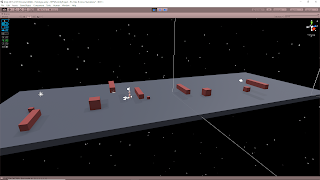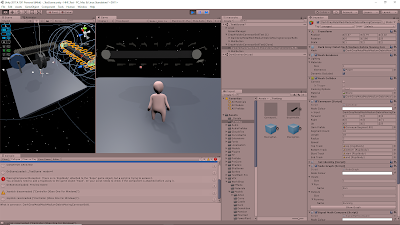September 20, 2019
Furthering Prototype
Level Generator
Prototype Enhancement
Allowing for Multiple Scenarios to Be Created at Once
This started as a thought for just generally helping with testing the classes to see if they were working properly, but then it seemed like it could just be a powerful addition to the system in general so I decided to implement it more properly into the system. The basic idea was simply adding a “Test Counter” which I could adjust to create a number of instances of the generic scenario I was generating.
The idea was that this would let me see more instances of the variance the system has at once, so I could more quickly test if it seemed like the system was working or not. This also helps give me a better picture of the overall variance the system has as well, so it was actually more helpful than I first realized.
I have also dabbled in machine learning (ML) and a key portion of using that is creating several test environments to more quickly train your system or agents. This gave me more motivation to look into changing my variables into array sets to deal with the idea of multiple puzzle scenarios (which could potentially later feed into how to get this setup for multiple testing environments for ML).
At the root of everything, the system is doing very similar work to what it was doing previously. I have just added several for loops and changed some variables instances into arrays to allow the overall system to deal with several puzzle instances at once. Holding all of this information in arrays could also be beneficial for printing out the data somewhere to keep better track of what works and doesn’t work with the system at any given time.
Example Image and Video
Example View of 5 Generated Puzzle Scenarios – By: me
Vimeo – Example Iterations of Scenario with a Test Run with a Character
Link – Test Example with Gameplay
GENERAL NOTES
I just wanted to make sure to note some other factors I ran into with some more testing. The mass of the TestCubes that needed carried around to reach the ledges ended up settling on 120. That was a value I found to be fairly easy to move around, but not so light that the cubes would topple over often (especially the smaller ones).
Currently the GenerationSystem has an array that holds all of the ledge height values passed in from every generation of a ledge, so that can be fed to each properly indexed cube for scaling purposes. However, because I am passing that information on Awake, I was unable to set the size of that array equal to the number of tests (as it should be), because even doing so in Awake was not being done in time. I tried setting the size of the array directly on variable declaration, but I want to be able to control the number of tests to create from the inspector so the array size comes from a serializeable field in Unity. I could not use this to declare my array size in the class’s general declared variables. So for now, it is just hard coded at some decently large array size (like 10) until I find a better solution.
NEXT STEP
I would still like to test this setup with a more complicated puzzle scenario, as this simple one is already helping me see a lot of possibilities and flaws that will need adjusted.



